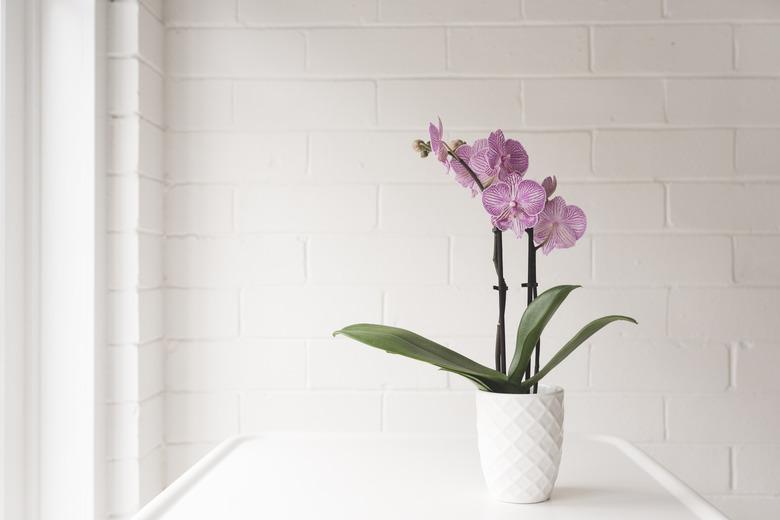Ice Cube Orchid Care And Maintenance
Orchids (family Orchidaceae) have an undeserved reputation for being difficult to grow and easy to kill, which, unfortunately, causes many people to shy away from growing the attractive and exotic plants in their homes.
In reality, you can grow many popular orchid species, such as Cattleya, Phalaenopsis and Dendrobium, at home with simple, common-sense care. One of the challenging points of orchid care is moisture levels, and overwatering is a common concern when growing the beautiful blooming plants. An easy way to monitor the water levels is with a few cubes of ice from the freezer. The ice cube watering method is a simple trick that you can use to avoid over-irrigating your new houseplant.
Sunlight for Healthy Plants
Most orchids abhor the cold and only a few are hardy enough to handle a good freeze. Keep them in a sunny and warm area to get the best blooms.
Orchids require just the right amount of sunlight in order to grow well and bloom. If provided too little sunlight, the plant will fail to blossom; if provided too much sunlight, the blossoms will fade and the foliage will burn. The best way to expose your orchid to the sunlight it needs is to place it within 4 feet of a sunny south-facing window where it can receive filtered light for at least four hours each day.
Water Concerns for Orchids
If it's your first time growing an orchid, knowing just how much water to give your new houseplant may seem a bit tricky. Fortunately, using the ice cube watering method takes all the guesswork out of irrigating your orchid.
Simply arrange three standard-size ice cubes on the surface of the potting mix around the plant; avoid letting the ice touch the aerial roots, stem, or leaves directly. As the ice cubes melt, they will slowly and evenly moisten the potting mix. Water your orchid once a week using this method.
Fertilize Plants Well
When grown in their native climates, orchids use their thick, fleshy roots to draw nutrients from the air around them. When you grow them indoors as houseplants, you must provide these essential nutrients for your orchids by following a regular fertilization schedule.
Fertilize the orchid with weekly applications of a specially formulated orchid fertilizer from early spring through summer. Cease fertilization during the fall and winter months; the plant is not actively growing and doesn't need the steady stream of supplemental nutrients.
How to Repot Orchids
Occasional repotting is essential to maintaining the long-term health of your orchid. A good rule of thumb is to repot indoor orchids every one to three years to replace the potting mix and to trim out any problematic roots.
Gently remove the orchid from its planting container and rinse its roots under warm running water. Feel the roots with your fingertips. Healthy roots will feel stiff and turgid. Roots that are soft and off-colored will need to be removed.
Use a sharpened and alcohol-sanitized gardening knife to cut out any roots that are brown or mushy. Repot the orchid on a well-draining potting mix made for orchids.
